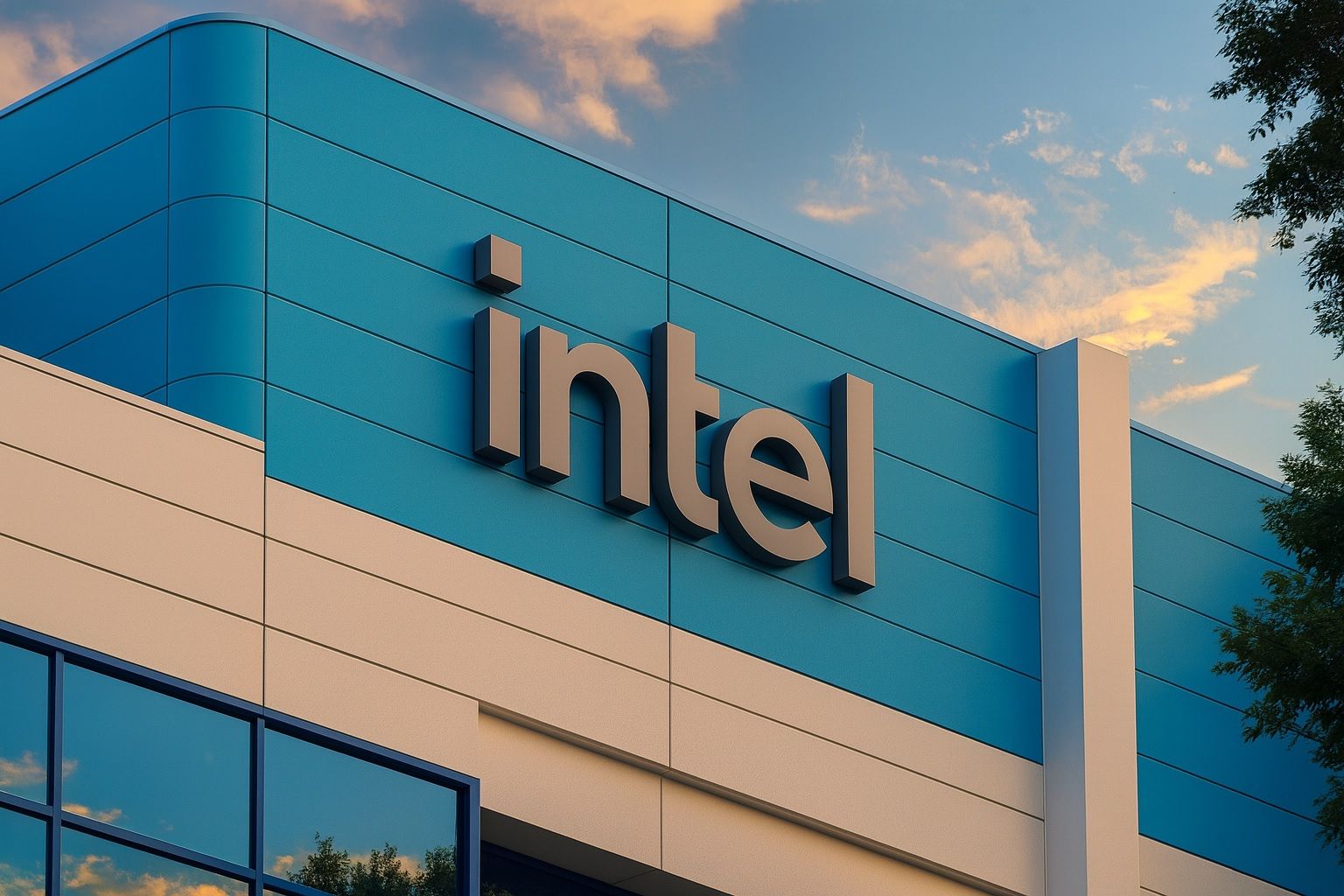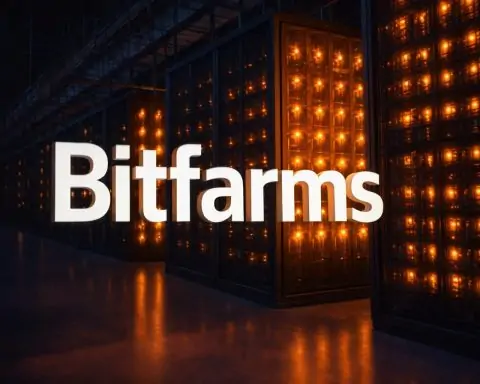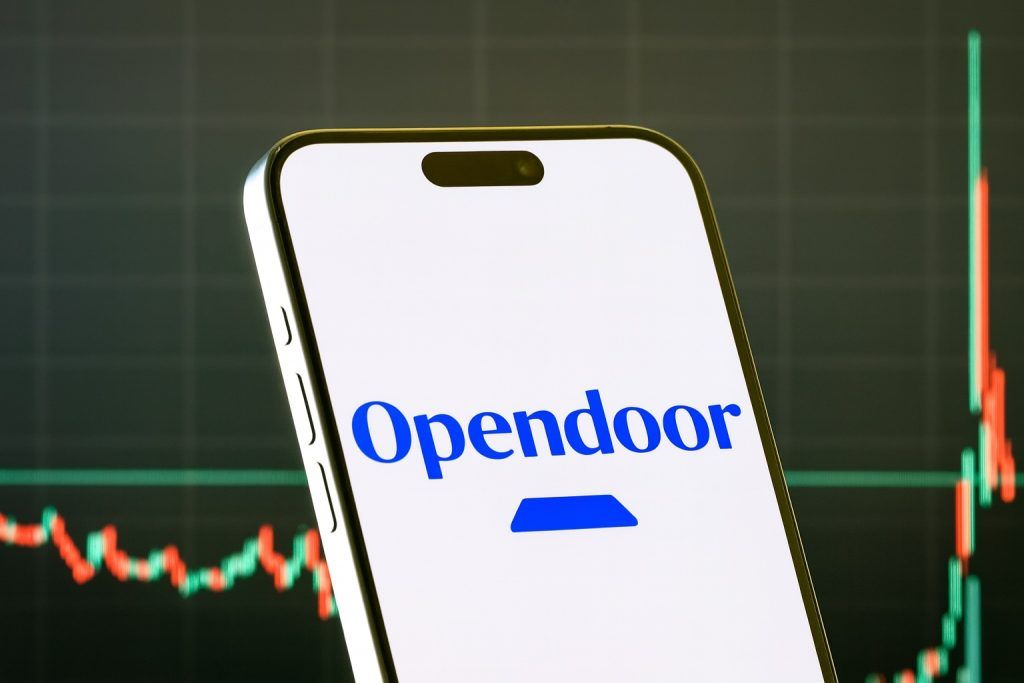- Stock near two-year high: INTC trades around $37–38 on Oct. 21–22, 2025, after surging ~85% year-to-date. The recent rally brought it within a few dollars of its 52-week high (~$39.65) [1] [2].
- Big partnerships: Investor enthusiasm has been fueled by blockbuster deals – the U.S. announced plans to convert its CHIPS Act grants into a ~9.9% Intel stake (~$8.9 billion) [3]; Nvidia agreed to invest $5 billion for ~4% of Intel and to co-develop next-gen AI chips [4]; Japan’s SoftBank quietly bought $2 billion of Intel stock in August [5]. Rumors have also swirled about AMD using Intel’s fabs, Microsoft’s Azure business placing chip orders, and even a potential Apple investment [6] [7].
- Fundamentals still shaky: Despite the hype, Intel’s core business remains weak. Q2 2025 revenue was $12.9 billion (flat year-over-year) and the company still lost money [8]. New CEO Lip-Bu Tan has cut ~20% of jobs and paused projects [9], but Intel isn’t expected to return to profit until 2026 [10].
- Analyst sentiment cautious: Wall Street is divided. The consensus 12-month price target is only about $26–30 – roughly 20–30% below today’s levels [11]. Bank of America recently labeled Intel “Underperform,” warning the stock ran “too far, too fast” without fundamental improvement [12]. Visible Alpha data show most analysts at “Hold” with an average target of ~$30.6 (about 20% below current price) [13]. Some bulls, however, have raised targets into the $40+ range after the deals [14].
- Competitors dominating AI: Rivals have benefited even more from the AI boom. Nvidia commands ~90% of the datacenter AI chip market and recently topped a $1 trillion market cap [15]. AMD hit all-time highs near $240 on AI-related deal news (up ~80% YTD) [16]. By contrast, Intel’s market value (~$175 B) is only half of AMD’s and a fraction of Nvidia’s [17]. Qualcomm, Intel’s major mobile-chip peer, is also pivoting to AI and 5G, but remains earlier in that cycle.
- Sector tailwinds: Industry-wide trends favor Intel’s space. Global chip sales are forecast to reach a record ~$697 billion in 2025, driven by AI and datacenter build-outs [18]. Wall Street notes that cloud and tech giants plan to spend hundreds of billions on AI hardware this year [19], fueling a “supercycle” in memory and other chips [20]. However, traditional markets (PCs and smartphones) are weak – PC sales may only grow ~4% in 2025 [21].
- Expert warnings and praise: Market pros urge caution. One portfolio manager observed that “Intel’s problems are beyond a cash infusion… [it] needs to catch up with TSMC technologically to attract business” [22]. Equity researcher Joe Tigay said “the markets are giving Intel a major pass on their current struggles” thanks to deal expectations [23]. Meanwhile, commentator Jim Cramer praised Tan as a “legendary semiconductor investor” whose deals “sparked a roughly 50% rally” [24], arguing Intel now has “adult supervision” and a path back into AI.
Intel’s stock has clearly become a focal point for traders betting on a turnaround. The last week saw volatile action: shares leapt about 3% on Oct. 20 to ~$38.10 (near recent highs), then eased slightly on Oct. 21 [25]. Over the past month the stock has pulled back roughly 10% from its early-October peak, but dip-buyers have defended prices in the mid-$30s [26] [27]. Options markets indicate traders expect an unusually large post-earnings swing (about ±10%) after the Q3 report on Oct. 23 [28], suggesting possible targets near ~$42 or ~$32 in the short term.
Blockbuster Deals and AI Hype Fuel Intel’s Surge
Intel’s recent rally has been powered by unprecedented backing and buzz. In late August the White House moved to convert idle CHIPS Act subsidies into equity, quietly purchasing about 274.6 million Intel shares for ~$20.47 each [29]. This gave Washington a 9.9% stake to help bolster U.S. chipmaking. Less than a month later, Nvidia announced it would put $5 billion into Intel (for ~4% equity) and collaborate on new CPU+GPU products [30]. As Reuters reported, Nvidia’s investment “not only provided cash; it also came with a plan” for jointly designed chips [31]. That September news sent INTC up 22% in a single session – its biggest jump since 1987 [32]. Japan’s SoftBank also quietly scooped up a $2 billion Intel stake in August [33]. Rumors have followed that other tech giants (e.g. Microsoft and Apple) may similarly forge deals with Intel. In early October, reports that AMD could use Intel’s foundry services (and hints of Microsoft Azure outsourcing) briefly lifted the stock, as analysts noted investors were “eager for any sign of Intel winning big orders” [34].
In tandem with these investments, Intel is promoting its next-generation products. In October it previewed its “Panther Lake” processors (Intel Core Ultra 3) and “Clearwater Forest” server chips – both built on the advanced 18A (2nm-class) node [35] [36]. The company says Panther Lake will begin shipping by year-end [37], and a new AI-focused GPU for data centers is due next year [38]. While technological execution is still unproven, these milestones (especially being achieved on U.S. soil) have bolstered optimism that Intel might regain competitiveness.
Turnaround Efforts vs. Shaky Fundamentals
Behind the headline numbers, Intel’s underlying business remains in a turnaround. In Q2 (reported July 2025) Intel earned $12.9 B in revenue – essentially flat year-over-year [39] – and burned cash, with gross margins slipping below 30% [40]. For all of 2024, Intel posted a staggering $18.8 B loss – its first annual red ink since 1986 [41]. The company has guided for another loss in Q3 (Oct 23 report), expecting roughly $12.6–13.6 B sales but a deeper net loss, partly due to share dilution from the new funding [42] [43].
New CEO Lip-Bu Tan (installed in March 2025) has aggressively cut costs. He’s slashed about 20% of Intel’s 94,000 employees this year and trimmed capital spending [44]. Tan even quipped he effectively “picked up $10 billion” through the government stake [45]. The company has also put up for sale or wound down non-core assets, such as divesting most of its Altera FPGA business [46]. These moves aim to stabilize Intel after years of overexpansion by the prior regime. Tan has said Intel will focus on building new fabs only when there is confirmed demand, a reversal of earlier plans [47].
Despite the turnaround efforts, many analysts note the core issues persist. Intel ceded the GPU and AI markets to Nvidia and has lost market share in CPUs to AMD [48] [49]. Its next-gen 18A process has reportedly run into yield problems [50], raising doubts about the timing of future chips. As one portfolio manager cautioned, even with fresh funding, “Intel’s problems are beyond a cash infusion… [it] needs to catch up with TSMC technologically to attract business” [51].
Analyst Forecasts: Skeptics vs. Bulls
Wall Street is split on whether the hype is priced in or not. The consensus price target for Intel is surprisingly low – only about $26–30 over the next 12 months [52]. That implies a potential 20–30% drop from current levels. Bank of America downgraded Intel to Underperform (Sell), warning the stock had climbed “too far, too fast” without commensurate progress [53]. Deutsche Bank likewise kept a Hold rating and ~$30 target even after the Nvidia deal, citing “execution risks” [54]. Median targets from Visible Alpha sit around $30.6, roughly 20% below today [55].
On the other hand, some investors are deeply bullish. A handful of analysts have lifted their targets into the low $40s post-deals [56]. They argue Intel’s discounted valuation (roughly 3× sales, 20× forward earnings) looks modest next to Nvidia’s sky-high multiples [57]. CNBC’s Jim Cramer praised Tan’s stewardship, calling him a “legendary semiconductor investor” and crediting the government, Nvidia and SoftBank deals with a “roughly 50% rally” in INTC [58]. Bulls also note that national security concerns could secure Intel government contracts and funding not available to rivals [59].
The tug-of-war between hype and reality is visible in the tape. Short interest remains elevated, reflecting bets on a pullback. Yet dip-buyers have stepped in on weakness – for example, when INTC briefly fell ~10% from its early October high, buyers emerged around $34–36, holding the stock up [60]. Going forward, Intel’s ability to justify its rally will likely hinge on the impending earnings report and subsequent execution. As one analyst put it, the market “gave Intel a major pass on their current struggles” in anticipation of positive news [61], but future gains will need to be earned by improved results.
Competitive Landscape: AMD, Nvidia and Others
Intel’s story is set against a broader AI arms race. Nvidia, the clear leader in AI chips, has seen its stock more than double in 2024–2025, riding surge in GPU demand. It now commands ~90% of datacenter GPU sales and a market cap above $1 trillion [62] [63]. AMD, Intel’s longtime CPU rival, is also riding high: its share price jumped over 30% in mid-October after announcing AI chip deals with OpenAI and Oracle [64], pushing AMD to ~80% year-to-date gains (all-time highs near $240) [65]. Some bulls even see AMD reaching $300 if its AI momentum continues [66]. AMD’s market value has now surpassed Intel’s (roughly $350B vs. ~$175B), a stark reversal of their long-held market caps.
In PCs and servers, Intel faces pressure too. AMD’s Ryzen and Epyc processors have taken unprecedented desktop and enterprise share (AMD now has ~30% of the x86 desktop CPU market). New Arm-based servers from cloud providers are also chipping away at Intel’s Xeon sales. Qualcomm remains a leader in smartphone chips (Snapdragon) and has begun eyeing AI data-center chips, but it has not yet seen the explosive AI-driven growth of Nvidia/AMD. In short, Intel is scrambling to keep up. Its strategy is to leverage partnerships (like with Nvidia) and its manufacturing base as differentiators. So far its foundry arm has only won smaller deals (e.g. wafer production for MediaTek [67]), but landing a marquee customer is seen as a potential catalyst. Analysts note that a large cloud order (rumored Azure deal) could validate Intel’s chipmaking tech, but until then Intel trails industry leaders like TSMC and Samsung in contract manufacturing [68].
Global Trends and Geopolitical Drivers
The semiconductor industry is being reshaped by geopolitics and technology trends. The U.S. CHIPS Act and related policies have funneled billions into Intel and other American fabs. For example, the Biden administration awarded Intel $7.86 billion in subsidies (plus tax credits) to develop the 18A node in the U.S. [69]. The federal 10% stake in Intel underscores Washington’s goal of a domestic champion in cutting-edge chips [70]. These moves come amid an escalating U.S.-China tech rivalry: the U.S. has tightened export controls on advanced chips, while China has slapped tariffs of up to 125% on some U.S. semiconductor imports [71]. About 27% of Intel’s revenue historically came from China [72], so such tariffs pose a headwind even as the company ramps up U.S. production. The CHIPS Act also includes workforce training funds and incentives to keep talent in America [73] [74].
Broadly, the sector’s boom is AI-driven. Deloitte forecasts global chip sales will hit $697 billion in 2025 (a record high), led by data-center and AI-capable chips [75]. Traditional chip buyers are less robust: PC and smartphone sales are only modestly growing [76]. The AI build-out has even driven up prices of conventional components (like DRAM memory) due to supply tightness [77]. Analysts estimate big tech firms will pour roughly $400 billion into AI infrastructure this year [78], ensuring continued demand for chips. For Intel, these trends are a double-edged sword: their products could benefit from rising chip demand, but they must catch up technologically to capture it.
Outlook and Sentiment: Cautious Optimism
In the near term, much will hinge on Intel’s upcoming earnings (after market close Oct. 23). Options traders are pricing in an unusually large move (~±10%) around the report [79]. If Intel beats guidance or gives positive commentary on partnerships and new products, the stock could test fresh highs (traders note ~$42 as a possible post-earnings peak). Conversely, any missteps might send INTC back toward the $32 level highlighted by options markets.
Beyond earnings, sentiment remains mixed. The technical picture is upbeat: Intel recently formed a bullish “golden cross” (50-day moving average crossing above 200-day [80]), and buying interest has been high. Yet given the lofty run-up, many investors see limited upside without solid results. The average analyst’s target suggests downside, and some veteran investors warn that hype alone won’t carry Intel far. As one expert put it, investors have given Intel a “pass” so far, betting on future deliverables [81].
In medium term, the key questions are execution and partnerships. If Intel can ramp Panther Lake and its AI GPU on schedule, and if its foundry deals (with Nvidia, rumored Azure, etc.) materialize, the company could regain credibility. On the other hand, if delays continue or rivals pull further ahead, the stock may correct. Right now, Intel’s valuation is much more modest than NVIDIA’s or AMD’s, so even modest progress could be rewarded. But the consensus remains skeptical: without clear proof of revival, many analysts expect INTC to retreat toward the mid-$20s or $30s in the next year [82] [83].
Bottom line: Intel’s stock is on a tear thanks to a potent mix of government support and AI partnerships, but fundamentals are still fragile. The coming weeks will test whether this rally has real legs. As one commentator notes, Intel finally has “adult supervision” and deep-pocketed allies [84] – whether that leads to a sustained comeback or just a short-term pop depends on the results yet to come.
Sources: Financial news and analysis from Reuters, TS2 (TechStock²), Benzinga, Intel Newsroom, Tom’s Hardware, Deloitte, Investopedia and others [85] [86] [87] [88] [89], including expert commentary cited above. These sources were used to report Intel’s recent stock performance, deals, financial results, competitor activity, and market outlook.
References
1. ts2.tech, 2. ts2.tech, 3. ts2.tech, 4. ts2.tech, 5. ts2.tech, 6. www.tomshardware.com, 7. ts2.tech, 8. ts2.tech, 9. ts2.tech, 10. ts2.tech, 11. ts2.tech, 12. ts2.tech, 13. www.investopedia.com, 14. ts2.tech, 15. ts2.tech, 16. ts2.tech, 17. ts2.tech, 18. www.deloitte.com, 19. www.reuters.com, 20. www.reuters.com, 21. www.deloitte.com, 22. ts2.tech, 23. www.reuters.com, 24. ts2.tech, 25. ts2.tech, 26. ts2.tech, 27. ts2.tech, 28. www.investopedia.com, 29. ts2.tech, 30. ts2.tech, 31. ts2.tech, 32. ts2.tech, 33. ts2.tech, 34. ts2.tech, 35. www.reuters.com, 36. simplywall.st, 37. www.reuters.com, 38. www.reuters.com, 39. ts2.tech, 40. ts2.tech, 41. ts2.tech, 42. www.reuters.com, 43. www.reuters.com, 44. ts2.tech, 45. ts2.tech, 46. ts2.tech, 47. ts2.tech, 48. www.reuters.com, 49. ts2.tech, 50. ts2.tech, 51. ts2.tech, 52. ts2.tech, 53. ts2.tech, 54. ts2.tech, 55. www.investopedia.com, 56. ts2.tech, 57. ts2.tech, 58. ts2.tech, 59. ts2.tech, 60. ts2.tech, 61. www.reuters.com, 62. ts2.tech, 63. ts2.tech, 64. ts2.tech, 65. ts2.tech, 66. ts2.tech, 67. ts2.tech, 68. ts2.tech, 69. www.ainvest.com, 70. www.ainvest.com, 71. www.ainvest.com, 72. www.ainvest.com, 73. www.ainvest.com, 74. www.ainvest.com, 75. www.deloitte.com, 76. www.deloitte.com, 77. www.reuters.com, 78. www.reuters.com, 79. www.investopedia.com, 80. ts2.tech, 81. www.reuters.com, 82. ts2.tech, 83. www.investopedia.com, 84. ts2.tech, 85. ts2.tech, 86. ts2.tech, 87. ts2.tech, 88. www.investopedia.com, 89. www.ainvest.com







